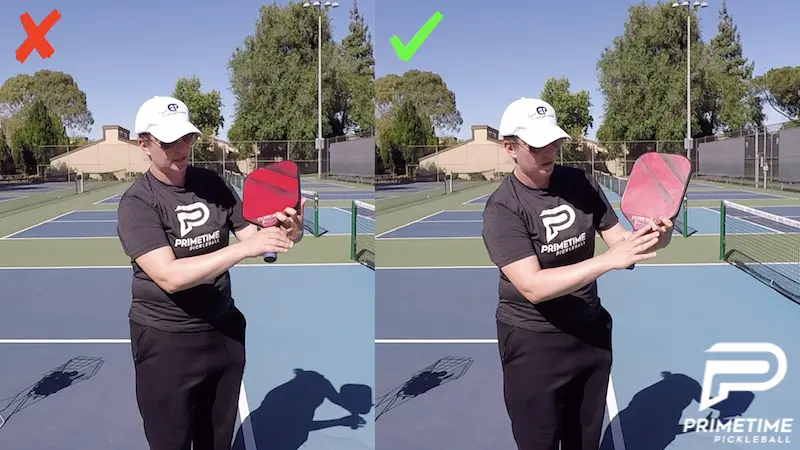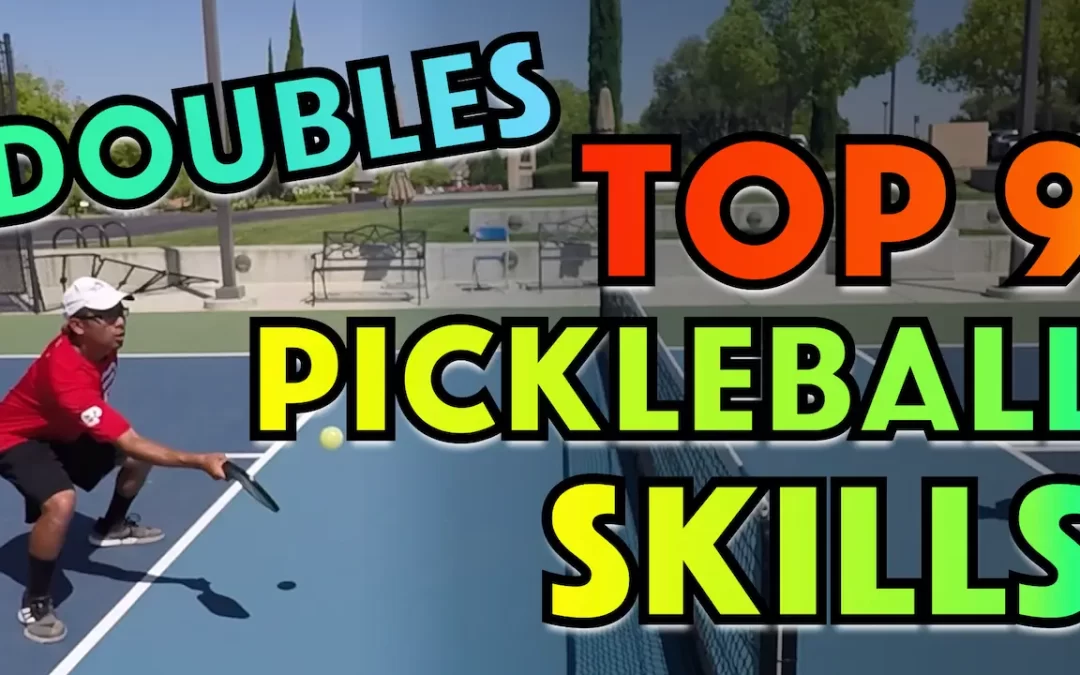In this video, we cover the one MAIN problem we wee that is limiting the power most players are getting on their overheads.
We’ll show you what this is, why to stop doing it, and what to do instead.
If you can master this move, your overheads will become much more dominating and keep your opponents scrambling and unable to get back in the point once they’ve popped it up.
There’s a key move that a lot of people don’t use in their overheads which is crucial. It’s called pronating.
It looks like this.
Grip
One of the things that what we see going wrong is people coming in with a grip that looks like this (see image below) which is called an Eastern grip. This is where your index knuckle is on the side of the grip.

To have a correct overhead grip, you want to approach your paddle with the the pad of your hand angled a bit lower than your fingers.
So, you’re not coming at the paddle with a grip perpendicular to the paddle face, you’re coming at it with your fingers angled a bit higher than your palm.

Now, where do you place your grip in terms of left to right (horizontal axis)?
You don’t want it on the eastern part which is where your index knuckle on the side. You want your index knuckle to be more on the 45-degree angle.
To give you a visual description. If you’re holding the paddle where the edges are facing up and down (see image below).
The top of the grip is number one. The side is number three. And number two would be between one and three in the middle.

We’re going to put our index knuckle on two with the fingers slightly up.
That’s the ideal position to hit an overhead which is the Continental grip.
Motion
Now that we have the grip locked in we’re going to talk about the motion.
When people hit overheads with the Eastern grip, which we mentioned was the wrong grip for overheads, we see the ball go up and we see the overhead looking a lot like the image below.

The problem with that is that it limits you to only being able to use your wrist and that’s not going to generate as much speed and power as if you could use your forearm and your wrist and turn into pronation.
That Continental grip that we just talked about is what’s going to allow you to do that.
That’s all we’re talking about here – how to pronate. We’re not going into the full move.
Keep in mind, sometimes your opponents will pop it up nice and short and you just need to snap it over with a simple wrist flick.
We’re focusing today on the overhead that is more than just a simple flick of the wrist which is the overhead with pronation.
Now, when the ball comes up we’re leading with the edge of our paddle with our continental grip and then we reach up turn it over flatten it to to meet the ball and then we’re going to flip out. At the end, our paddle is going to be facing out.

We come in with the pinky edge, turn it over so the paddle face is now open, flip it over to now be leading with the thumb. So leading with pinky, then turn paddle face out, then thumb.
That’s called pronating. That’s what we want to do.
I’m really able to generate a lot of racket head speed which is the key to hitting the ball with power because I’m effectively using my forearm and my wrist with this Continental grip, not just my wrist with this Eastern grip.
Go out there and practice!
Happy Pickeling!






